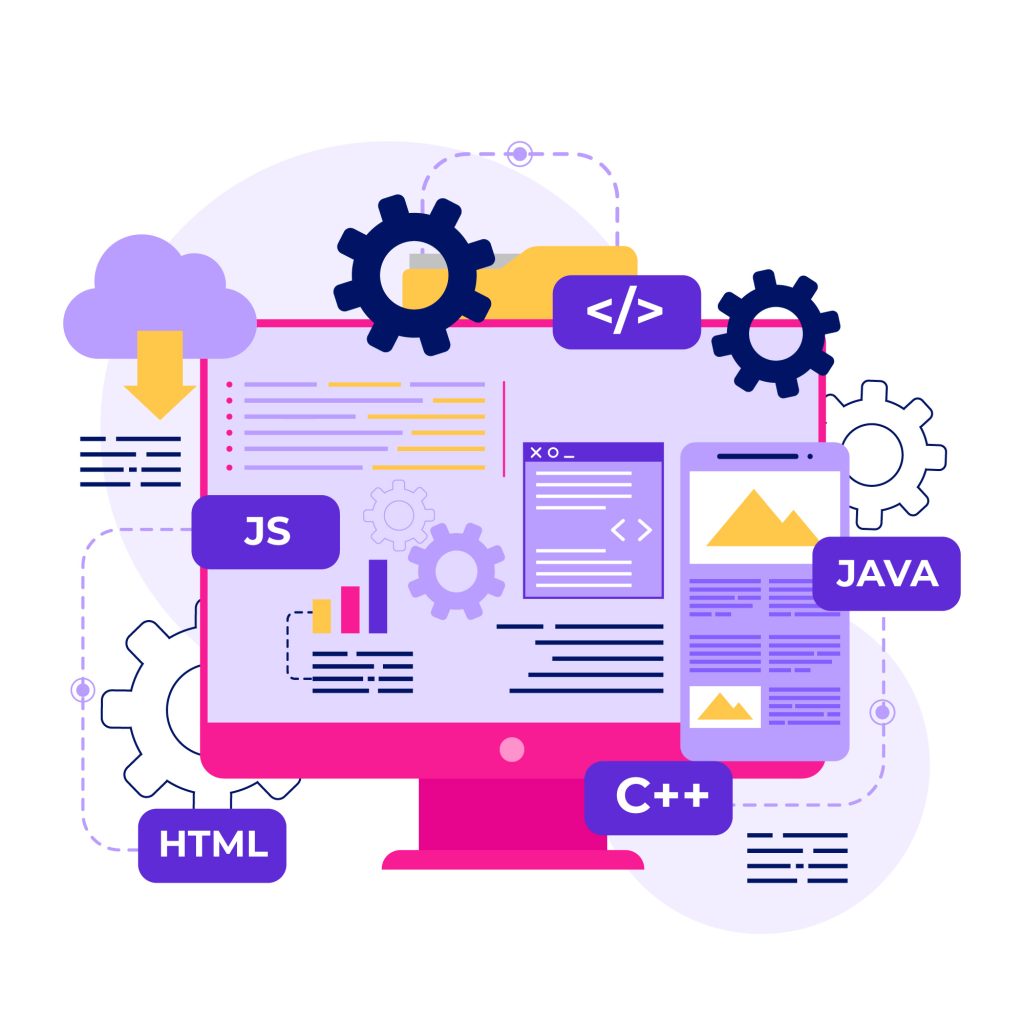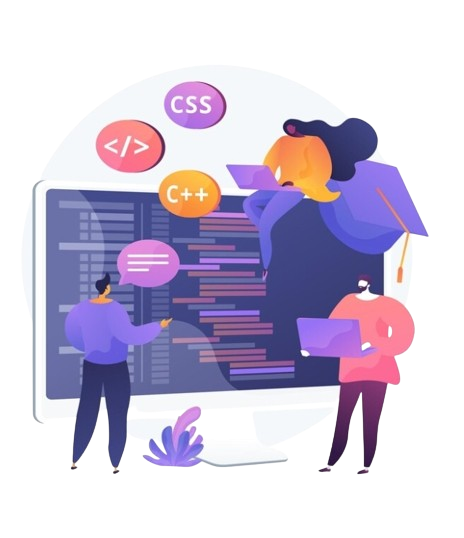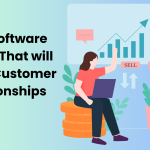The dynamic ecosystem of software development constantly evolves in tandem with local and global changes and shifting priorities of users. As software development organizations or professionals, you have to keep abreast of new technological advancements. It is essential for industry players to know that if they fail to update their software development practices in parallel with changing market needs, they may get lost in a largely saturated industry.
In this article, we will walk you through top emerging software development trends, news and updates in the year 2024. First, let’s take a bird’s eye view of the current software development environment.
Current Software Development Landscape
The world of software development has never been stagnant. That’s because it is majorly influenced by various factors. It has been evolving ever since, but few innovative practices or cutting-edge trends stand out every year. Up until now, combining technologies like cloud computing, microservices architecture, and DevOps procedures is the current trend in software development. A lot has changed in the IT industry as a result of these recent trends in software development, including how software is created, implemented, maintained and updated. In this new software trend, agile approaches have been widely accepted and enable faster development cycles and improved cooperation amongst teams from different departments.
Software Development Trends That Stood Out in 2023
- Progressive web apps are still a common substitute for native app development. In addition to PWAs, low-code or no-code app development is picking up pace and getting popular.
- Cloud computing, machine learning, and artificial intelligence remain major trends in 2023 and even now in 2024.
- Microservices architecture and techniques related to Development, Security, and Operations (DevSecOps) are two of the newest developments in the software development industry.
- All things considered, earlier shifts in the IT industry are what are driving the current trends in software development. The industry will welcome a significant change as a result of the technological shift due to Covid-19 pandemic.
- Agile development approaches have also been more widely accepted, enabling shorter development cycles in the context of remote and hybrid working models.
- Modern advancements such as blockchain development, IoT, augmented reality, and artificial intelligence, are at an all-time high.
However, what does this imply for future trends in software engineering? Moreover, how can software development firms help shape the future of these software technology trends?
We’re excited to explore past year projections and current software development trends. Lo and behold, what lies ahead in 2024 and beyond.
Top-Notch Software Development Trends to Follow in 2024
Some of the key software development trends to follow in 2024 are as follows:

1. Rapid Adoption of AI & ML Integrations
2024 looks like a year of AI technology, with ChatGPT and other OpenAI products generating a lot of excitement.
Developers and software professionals are integrating AI and ML solutions into their mundane tasks and automating them to the optimal levels. Whether it is about complex problem solving, data-driven decision-making, predictive analysis, NLP (Natural Language Processing), sentiment analysis or chatbots integration, AI is swiftly taking the lead in the software development industry. The industries that will benefit from automated operations are accounting, banking, data processing, healthcare, and customer service and many more.
2. Low-Code / No-Code Development
Software development is a tiring and time-consuming process. The quest for an easier and convenient way to write cde and develop software solutions ends with the introduction of low-code or no-code application development.
With the increasing popularity of low-code and no-code development, developers of all stripes will be able to take part in the process. This approach decreases development times and speeds up application delivery by encouraging collaboration between business users and IT specialists.
3. Blockchain Technology Will Continue to Thrive Beyond FinTech
The name “Blockchain” is not new for many of us. It was a most popular trend in Fintech and cryptocurrency in 2023. What will happen in 2024? Blockchain technology will continue to expand beyond fintech and will disrupt innovative solutions for the users and tech geeks.
Companies across a range of sectors are starting to adopt the technology as they become aware of its benefits and usefulness. This is especially true given that blockchain’s decentralization provides exceptional security.
It is anticipated that the growth of decentralized systems in many software development industries, including supply chain tracking, media, publishing, and healthcare, would continue on its current trajectory in the future. This is because blockchain is transparent, nearly impervious to hacking, and incorruptible due to its decentralized structure.
4. The Blooming of FinOps & GreenOps
FinOps and GreenOps are regarded as the best emerging software development trends in 2024. Proliferating out of cloud computing, DinOps and GreenOps are definitely going to be game-changer trends.
After the pandemic-19 hit the world and took businesses to a destructive level, companies understood the significance of meeting the changing needs of the market as well as customers. Now, organizations are focusing more on sustainability and they know that cost reduction and productivity should be cornerstones of their operations.
In a nutshell, FinOps tries to drive efficiency across multiple financial operations, whereas GreenOps focuses on implementing eco-friendly methods in line with long-term value development. By leveraging FinOps and GreenOps, organizations may work to raise their bottom line, comply with regulations, support sustainability efforts, and improve their brand reputation. They are a plus-plus in all aspects.
5. An Uptick in the Use of React Native
React Native is an exceptional programming tool to develop high-quality and cross-platform hybrid applications. Developers can easily build high-performing apps for various platforms using single-codebase.
The boom of React Native is not going to get over anytime soon. Teams can operate quickly and effectively, solidifying its place as a crucial tool for companies trying to expand their customer base, maximize productivity and optimize processes.
6. 5G – To Evolve or Not To Evolve
5G was a huge success after its inception. It transformed the world to a next level. While rumor mills are running around 6G and 7G, 5G is the ultimate reality as of now.
Technology experts predict that 15% of the world’s total devices or 1.4 billion in number would be connected to 5G connectivity by the year 2025.
This is the outcome of 5G’s higher efficiency compared to 4G. It is a cutting-edge network architecture that attempts to enhance user experiences by reinventing online communication and interaction. Furthermore, it’s expected that the 5G architecture will speed up the advancement of cutting-edge technologies like the Internet of Things and artificial intelligence (AI).
7. Total Experience (TX) for Improved Conversions
Customer experience, user experience, staff experience, and multi-experience are all combined into one core point of intersection that is known as Total Experience (TX). Startups can empower their support workers and give their clients the best possible experience by using a TX approach.
The core of Texas is communication, and that requires integrating efficient customer support systems. Ensuring smooth communication between consumers and support staff is essential, especially in cases where the latter are working remotely.
Total experience is best embodied by Virtual Private Network (VPN) providers who provide responsive, round-the-clock live-chat assistance. Their strategy emphasizes how crucial it is to have a support staff that can react quickly and efficiently, improving user experience overall and fostering client loyalty and satisfaction.

8. Internet of Behaviour (IoB): A New Buzzword in Town
In any firm, personalisation is a key factor in success. Users will become more accustomed to using your infrastructure the more efficient your service is. Important data, such as user behaviors, interests, and preferences from Big Data, BI (Business Intelligence), and CDPs, are brought to light by the Internet of Behaviour (IoB).
Utilizing data from wearable technology, intelligent home appliances, and personal online activities, Internet of Business (IoB) provides insightful insights into user behavior and interests. IoB makes it simpler to track, combine, and analyze vast amounts of data from diverse online activities and individual behaviors.
This covers topics like usage patterns on social media and even business dealings. IoB lags somewhat behind IoT in terms of adoption and momentum. Nonetheless, it is very possible that IoB may pick up more steam as long as consumers continue to lean towards personalisation and companies look for methods to provide users with a tailored (but still on-brand) experience.
In a Nutshell
Software development trends are evolved, updated and emerged due to massive digital shifts. We tried to improvise what lies ahead in the year 2024 and how we should get ourselves ready for future software development prospects.
2024 holds great potential for software development as it will bring together cutting edge technologies with an increased emphasis on sustainable and ethical practices. In order to stay ahead of these trends, organizations and developers alike must continue to be flexible, agile, and dedicated as we traverse this drastically changing terrain. By embracing these developments, we open the door to a future in which software not only satisfies the needs of the digital era but also helps create a more sustainable, connected, and secure world.
If you are looking for a reliable and expert partner for your software development needs, Stackup Solutions stands out in terms of technical skills, experience, and project management. Contact us today as we’re thrilled to discuss your product requirements.



.jpeg)
